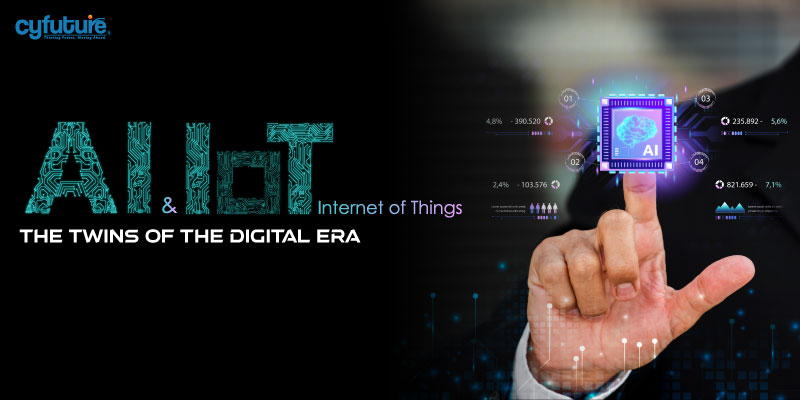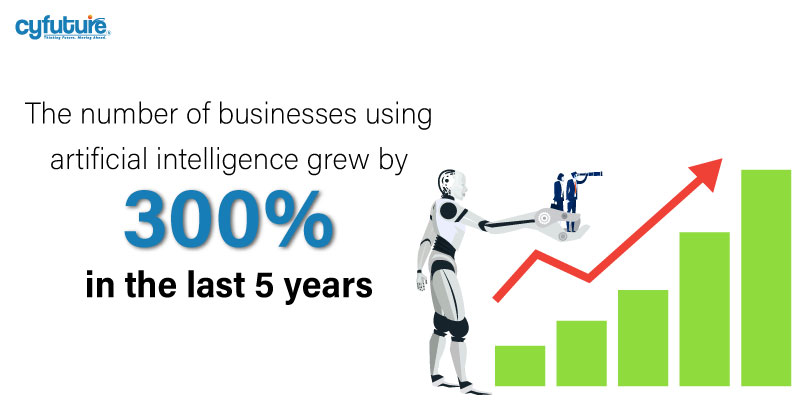-
Get Cloud GPU Server - Register Now!
Toggle navigation

Thanks to the Internet of Things and Artificial intelligence, businesses are now able to collect, access, analyze, and interpret more data. When IoT and AI technologies are combined, intelligent robots that emulate intelligent behavior and help in making educated judgments with little to no human interaction are produced. A major factor in the world becoming increasingly digital and networked is the Internet of Things. Today, billions of devices throughout the globe are online and continuously collect and exchange data. IoT may be used by businesses to gather secure, dependable real-time data and transform it into insights that can be put to use. This helps to increase business productivity and efficiency while consuming less resources.
When artificial intelligence (AI) and the Internet of Things (IoT) are combined, the possibilities are endless. Examples of what may be achieved include wearable technology and comprehensive home security systems. AI is being used by a lot of companies to help IoT reach its full potential and become a vital part of their operations. Large companies like Amazon, Oracle, and Microsoft have purposefully integrated AI into IoT applications, which has increased organizational agility. The increasing convergence of AI and IoT is having an influence on a wide range of technical domains, such as open-source APIs, robotics, mobile devices, healthcare, and online businesses. Collaboration between AI and IoT is still expanding and offers several benefits across various technology domains.
Artificial intelligence (AI)-powered computers are capable of mimicking human behavior. AI enables computers to learn, gain new perspectives, solve problems in the real world, and recognize noises, objects, and speech. Computers can adapt and make wise judgments by learning from data thanks to essential AI components like machine learning (ML) and deep learning (DL). This revolutionary technology is transforming several sectors since it is inspired by brain operations. AI is always evolving and advancing with each passing, offering top-notch solutions to modern real-world problems and making human lives more tech-oriented.
IoT in simple terms, can be considered as a huge network of hardware devices and software that are linked to each other and share significant data. This networked system is made up of several gadgets, from sophisticated industrial machines to smart thermostats for homes. These elements work well together to form a network of connected “things,” which facilitates data exchange and opens up a variety of applications, from optimizing living areas to enhancing industrial operations. IoT’s pervasive connectivity is a revolutionary force that is ushering in a new era of automation, insights, and productivity across many sectors.
Because of AI and IoT, society has improved remarkably. Today’s technology is far superior to those of the past, including home applications, robotic cutting tools, Siri, Alexa, and other commonplace objects. AIoT (Artificial Intelligence of Things) is the result of combining AI and IoT. These devices will ultimately grow into powerful, communicative, intelligent machines that can process information faster and more accurately than ever before. People can be trusted more, which makes logical sense, and relying more heavily on artificial intelligence is challenging. However, AIoT can bridge this divide and make the transition from believing in humans to believing in science easier.

Smart Homes and Cities
IoT and AI combine to improve automation and connection in smart homes. Sensor-equipped smart gadgets gather information on the behaviors and preferences of their users. After that, AI systems examine this data to forecast user behavior and make adjustments. Smart thermostats, for example, may alter settings for maximum comfort and energy efficiency based on learning user preferences for temperature. IoT sensors in smart cities collect information on energy consumption, trash management, and traffic patterns, which enables AI to optimize urban services and infrastructure.
Healthcare
By enhancing patient care, diagnosis, and treatment, advances in AI and IoT are completely changing the healthcare industry. Wearable technology with built-in sensors continually checks vital signs and sends data in real-time to medical professionals. This data is analyzed by AI systems for predictive analytics and early anomaly identification. Access to individualized treatment plans, drug adherence programs, and remote patient monitoring is expanding, improving healthcare outcomes while cutting costs.
Industrial Internet of Things (IIoT)
The Industrial Internet of Things (IIoT) plays a key role in the manufacturing industry by optimizing and enhancing manufacturing processes. This is done by combining AI and IoT together. Machine sensors gather information about operation and maintenance requirements. AI systems plan maintenance, anticipate equipment breakdowns, and streamline industrial processes. By reducing downtime and improving operational efficiency, this predictive maintenance approach prolongs the life of industrial equipment.
Agriculture
Precision farming and resource optimization are two problems that AgTech, or AI and IoT applications in agriculture, is tackling. IoT sensors gather information on crop health, temperature, and soil moisture. AI examines this data to provide suggestions on when to plan irrigation, locate pests, and harvest crops. These innovations improve resource efficiency, encourage environmentally friendly farming methods, and raise agricultural output.
Retail
AI and IoT improve consumer experiences, streamline inventory control, and allow tailored marketing campaigns in the retail industry. IoT-enabled smart shelves keep an eye on inventory levels and automatically initiate replenishment procedures. Customer preferences and habits are analyzed by AI-driven analytics, enabling focused marketing efforts and tailored suggestions. Cashierless shops and other automated checkout procedures are prime examples of how these technologies have been seamlessly integrated.
Transportation
The transportation sector is changing, becoming greener, safer, and more efficient thanks to AI and IoT technologies. IoT sensors in connected cars collect information on road conditions, vehicle performance, and driver behavior. This data is processed by AI algorithms to provide capabilities like autonomous driving, predictive maintenance, and real-time navigation. Intelligent traffic control systems enhance traffic movement and lessen gridlock, promoting more environmentally friendly urban transportation.
Energy Management
IoT and AI are essential for maximizing energy use and advancing sustainability. IoT sensors are used by smart grids to track the distribution of energy, and AI algorithms evaluate data to forecast demand trends and maximize energy flow. Energy conservation is aided by smart houses with AI-driven energy management systems that automatically modify heating, cooling, and lighting depending on human behavior and preferences.
Environment Monitoring
In environmental conservation efforts, AI and IoT are instrumental in monitoring and mitigating the impact of climate change. IoT sensors collect data on air and water quality, soil conditions, and biodiversity. AI analyzes this data to identify patterns, assess environmental risks, and predict natural disasters. Various scientists and government authorities can utilize this data to make strategic decisions and enforce policies that aim toward sustainable resource utilization.
Virtual Reality (VR)
Virtual Reality (VR) experiences are highly optimized and enhanced when AI and IoT combine together. IoT sensors gather data from the real world for VR applications, enhancing virtual reality with dynamic features that react to human input. In order to personalize VR interactions and provide a more realistic experience, AI systems examine user behavior, preferences, and ambient data. IoT devices may also be included in VR configurations to provide improved haptic feedback and real-time data transmission.
Augmented Reality (AR)
AI algorithms analyze real-world data, allowing AR overlays to adapt intelligently to the user’s surroundings. For instance, AR glasses integrated with IoT sensors can identify objects, and AI processes the information to provide relevant, contextual AR content. This synergy transforms AR into a dynamic and personalized tool, bridging the digital and physical realms seamlessly. The combination of AI and IoT technologies amplifies the immersive and adaptive nature of Augmented Reality applications.
In summary, the combination of AI and IoT offers unparalleled advancements that fundamentally alter our way of living and working. AI, or artificial intelligence, is always changing. Specifically, by allowing computers to emulate human behavior, machine learning and deep learning have significantly improved speech recognition, problem-solving, and decision-making.
Concurrently, an environment where data moves easily between devices has been established by the vast network of linked gadgets in the Internet of Things, each one outfitted with sensors and software. The industries that have been greatly influenced by the confluence of AI and IoT include healthcare, manufacturing, retail, transportation, energy management, environmental monitoring, smart cities, and even virtual and augmented reality.
The uses are numerous and include effective energy management, individualized healthcare programs, and manufacturing excellence in industrial environments. Companies are using AI and IoT together to predict trends, improve efficiency, and optimize strategy. The potential for innovation and advancement across a wide range of areas is unbounded as these technologies develop, pointing to a future in which linked systems and intelligent machines will completely transform the ways in which humans interact with both the digital and physical worlds. When AI and IoT work together, great things happen. The benefits are unimaginable and add to the always-changing field of technological innovation.
Read More: Augmented Reality in Retail: Transforming Online Shopping Experience for Customers
FAQs
Q1 What are examples of AI and IoT in real life?
Answer: Numerous real-world instances of AI and IoT integration are changing daily lives and whole businesses. Wearables with Internet of Things (IoT) sensors continually track vital indicators in the healthcare industry, transmitting data to AI systems for predictive analytics. Smart homes link with a variety of IoT devices to manage lighting, thermostats, and security systems by utilizing AI-driven assistants such as Alexa from Amazon. IoT sensors gather data on soil conditions in agriculture, and artificial intelligence (AI) evaluates it to maximize crop health and irrigation. Using information from the Internet of Things sensors, AI algorithms are used by autonomous cars to navigate and maintain traffic safety. These illustrations highlight how AI and IoT are genuinely improving ease and efficiency in a variety of spheres of our lives.
Q2 What is the future of AI and IoT?
Answer: There is a great deal of potential for revolutionary developments in AI and IoT in the future. Deeper integration of AI and IoT will lead to more intelligent, adaptable systems. Personalized treatment programs and remote monitoring will become standard practices in the healthcare industry. Infrastructure will be optimized in smart cities, improving sustainability. Automation and efficiency will rise in sectors like manufacturing. The combination of AI and IoT will revolutionize our way of living and working, bringing in a period of never-before-seen connectedness, efficiency, and creativity. AI and IoT technologies will work together seamlessly to design the future landscape.
Q3 Which businesses can benefit from AI and IoT?
Answer: Businesses in a wide range of industries can benefit from AI and IoT: manufacturing can operate more efficiently; retail can provide more individualized experiences; healthcare can monitor patients remotely; transportation can improve autonomous vehicle technology; energy can optimize the smart grid; agriculture can practice precision farming; smart cities can plan urban areas; financial services can detect fraud; telecommunications can optimize networks; logistics can improve supply chain processes. These technologies boost efficiency, provide insightful data, and foster innovation, making them valuable tools for businesses trying to acquire a competitive edge in the digital era.